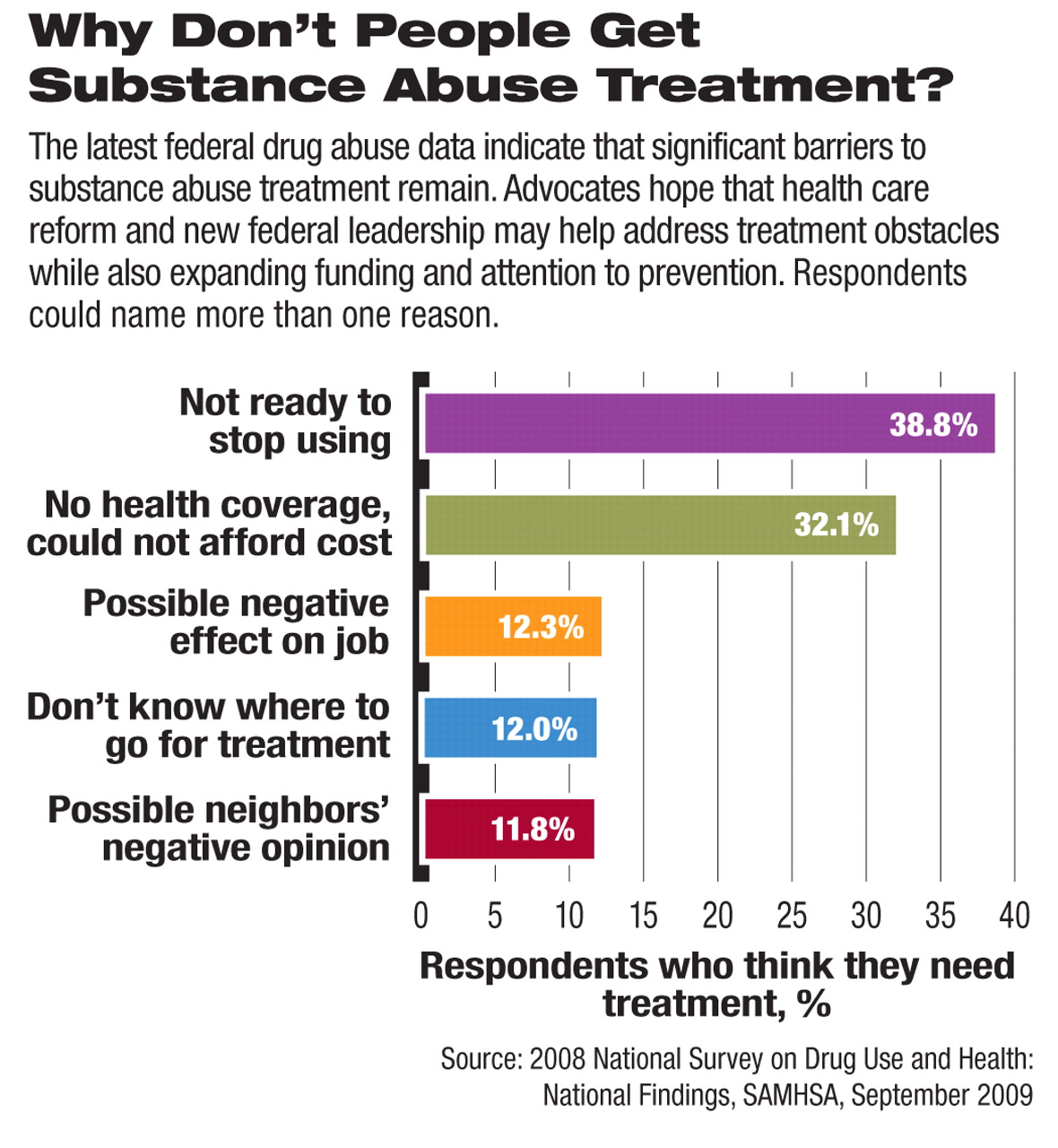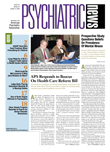Changing the name of the “war on drugs” has not yet resulted in any changes in the drug-use habits of Americans. However, treatment advocates are hopeful that a new approach is coming and will bring better results.
The overall U.S. level of illicit drug use remained level at about 8 percent as it was in the prior year, according to the 2008 National Survey on Drug Use and Health (NSDUH), the results of which were released in September.
The results of the national sample survey of about 67,500 people were extrapolated to population estimates. It identified several areas of progress, including significant decreases in the misuse of prescription drugs between 2007 and 2008 among people aged 12 and older.
Progress also was made in curbing methamphetamine use among people aged 12 and older. The number of users dropped sharply from approximately 529,000 people in 2007 to 314,000 in 2008. In addition, the extent of cocaine use decreased from 1 percent, or 2.4 million, in 2006 to 0.7 percent, or 1.9 million, in 2008.
Promising results also were found among the population of 12- to 17-year-olds, who are heavily targeted by prevention advocates. These youth had a significant decline in overall past-month illicit drug use, from 11.6 percent in 2002 to 9.3 percent in 2008. There also were significant decreases in the current nonmedical use of prescription drugs from 3.3 percent in 2007 to 2.9 percent in 2008.
“That's somewhat encouraging, given the substantial effort that has been put into reducing prescription drug abuse among teens,” Lizbet Boroughs, associate director of APA's Department of Government Relations, told Psychiatric News.
Unfortunately, those reductions were offset by growing abuse of other substances, according to the NSDUH. For example, the survey identified significant increases in the rates of Ecstasy and LSD use among youth in recent years. Past-year Ecstasy use in 2008 for teenagers was 1.4 percent; the lowest level of past-year Ecstacy use in teens since 2002 was 1 percent in 2005. Likewise, the 0.7 percent of teens who reported using LSD within the past year in 2008 was significantly higher than the lowest rate since 2002 of past-year use of 0.4 percent reported in 2006.
One continuing problem highlighted by the SAMHSA survey, according to some treatment advocates, is that it continues to show a vast gulf between the number of people who need specialized treatment for a substance abuse problem and the number who receive it. The survey found that 23.1 million Americans need such care for a substance abuse problem, but only 2.3 million (about 10 percent) receive it.
“There are a stubbornly high number of people who need treatment and can't get it,” Alexa Eggleston, director of public policy at the National Council for Community Behavioral Healthcare, told Psychiatric News. “Hopefully, that is one area that the [Obama] administration is committed to focus on.”
Treatment advocates said the intransigent substance abuse statistics highlight the need for a new federal approach to the problem.
“It's clear evidence that we are far from where we need to be,” said David Rosenbloom, Ph.D., president and CEO of the National Center on Addiction and Substance Abuse at Columbia University, in an interview with Psychiatric News.
Gil Kerlikowske, Obama's new director of the Office of National Drug Control Policy (ONDCP), has voiced support for reexamining the government's approach to the “war on drugs.” For starters, he has said in numerous media interviews that he wants to drop the reference to a“ war” because it creates a misunderstanding that the country is in conflict with its own citizens.
“As we develop the Obama administration's first drug-control strategy, we will emphasize a balanced approach that can respond to current and emerging substance abuse trends. Improving substance abuse prevention and treatment systems will be among our priorities,” Kerlikowske said in a statement when the NSDUH data were released.
To that end, Kerlikowske has undertaken a nationwide “listening tour” that has sought comments from drug treatment and abuse-prevention advocates, among others. For instance, at the June meeting of the National Association of State Alcohol and Drug Abuse Directors (NASADAD) the drug czar called for more funding for treatment and invited input to be considered for the new national drug-control strategy expected to be announced in early 2010.
Substance abuse treatment advocates hope that the balanced approach includes a drug-control strategy that places greater emphasis on and funding for treatment and prevention over the interdiction and incarceration of drug users emphasized in the Bush administration's annual drug plan.
There was little evidence of a new balance in the administration's Fiscal 2010 budget, which followed the practice of the Bush administration in requesting that Congress cut funding for the main federal program for local school districts' addiction-prevention programs. Funding for the Safe and Drug Free Schools and Communities grant program was restored by Congress under Bush, but legislators have supported the cut under Obama.
“That program is a large part of the prevention program of the states,” Robert Morrison, interim executive director of NASADAD, told Psychiatric News.
Conversely, the Fiscal 2010 budget proposed increasing addiction treatment within the criminal justice system. Treatment advocates said they hope that the proposal is a sign of the new direction that the Obama administration will take in both its annual drug plan and the next federal budget. Another good sign to treatment advocates: the appointment of A. Thomas McLellan, Ph.D., a noted addiction researcher, as deputy director of ONDCP. McLellan has been involved in some of the most important addiction research in recent decades, including the development of the Addiction Severity Index and studies comparing addiction with other chronic health conditions.
Treatment advocates said that they hope McLellan and others will push the administration to support increased integration of mental health and substance abuse treatment with general health care through demonstration projects and increased funding, among other initiatives. Health reform proposals under consideration would fund substance abuse treatment and other mental health treatments through the medical-home treatment model and pilot programs that coordinate treatment of multiple chronic illnesses.
ONDCP “clearly understands the need for treatment as the most effective way to reduce the demand for illicit drugs,” Rosenbloom said.
Further information on the 2008 NSDUH is posted at<www.oas.samhsa.gov/nhsda.htm>.▪

